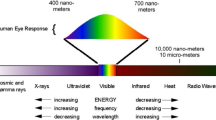Abstract
The tunability of propagation properties of surface plasmon polariton (SPP) modes in a waveguide formed by two parallel graphene layers separated by a dielectric layer is studied. For this purpose, the dispersion equation of the structure is numerically solved and the effects of applied bias voltage, the role of effective structural parameters, and electron–phonon scattering rate on the propagation of symmetric and antisymmetric SPP waves are investigated. The results of calculations show that considering the electron–phonon scattering rate as a function of Fermi energy and temperature leads to a considerable decrease in the propagation length of SPPs. As the main result of this work, tuning the propagation characteristics of SPPs is possible by varying any of the parameters such as applied voltage, thickness of insulating layer between two graphene layers and permittivities of dielectric layers, and finally the temperature. It is found that antisymmetric mode benefits from a larger propagation length in comparison with that of the symmetric mode.









Similar content being viewed by others
References
Jung J, Pedersen TG (2013) Analysis of plasmonic properties of heavily doped semiconductors using full band structure calculations. J Appl Phys 113(11):114904
Anker JN, Hall WP, Lyandres O, Shah NC, Zhao J, Van Duyne RP (2008) Biosensing with plasmonic nanosensors. Nat Mater 7(6):442–453
Catchpole KR, Polman A (2008) Plasmonic solar cells. Opt Express 16(26):21793–21800
Campion A, Kambhampati P (1998) Surface-enhanced Raman scattering. Chem Soc Rev 27(4):241–250
Li R, Zheng B, Lin X, Hao R, Lin S, Yin W, Chen H (2016) Design of ultra-compact graphene-based superscatterers
Li R, Lin X, Lin S, Liu X, Chen H (2015) Atomically thin spherical shell-shaped superscatterers based on a Bohr model. Nanotechnology 26(50):505201
Li R. J, Lin X, Lin S. S, Liu X, Chen H. S (2015) Tunable deep-subwavelength superscattering using graphene monolayers. Opt Lett 40(8):1651–1654.
Abergel DSL, Apalkov V, Berashevich J, Ziegler K, Chakraborty T (2010) Properties of graphene: a theoretical perspective. Adv Phys 59(4):261–482
Maier S. A. (2007). Plasmonics: fundamentals and applications. Springer Science and Business Media
Gan CH, Lalanne P (2010) Well-confined surface plasmon polaritons for sensing applications in the near-infrared. Opt Lett 35(4):610–612
Holmgaard T, Bozhevolnyi SI (2007) Theoretical analysis of dielectric-loaded surface plasmon-polariton waveguides. Phys Rev B 75(24):245405
Ashcroft N. W (1976) ND Mermin Solid state physics. WB Saunders Company
Novoselov KS, Geim AK, Morozov SV, Jiang D, Zhang Y, Dubonos SV, Firsov AA (2004) Electric field effect in atomically thin carbon films. Science 306(5696):666–669
Buslaev PI, Iorsh IV, Shadrivov IV, Belov PA, Kivshar YS (2013) Plasmons in waveguide structures formed by two graphene layers. JETP Lett 97(9):535–539
Cheng J, Wang WL, Mosallaei H, Kaxiras E (2013) Surface plasmon engineering in graphene functionalized with organic molecules: a multiscale theoretical investigation. Nano Lett 14(1):50–56
Bludov YV, Ferreira A, Peres NMR, Vasilevskiy MI (2013) A primer on surface plasmon-polaritons in graphene. International Journal of Modern Physics B 27(10):1341001
Falkovsky L. A (2008) Optical properties of graphene. J Phys Confer Ser 129(1):012004. IOP Publishing
Falkovsky LA, Varlamov AA (2007) Space-time dispersion of graphene conductivity. The European Physical Journal B 56(4):281–284
Svintsov D, Vyurkov V, Ryzhii V, Otsuji T (2013) Voltage-controlled surface plasmon-polaritons in double graphene layer structures. J Appl Phys 113(5):053701
Gan CH, Chu HS, Li EP (2012) Synthesis of highly confined surface plasmon modes with doped graphene sheets in the midinfrared and terahertz frequencies. Phys Rev B 85(12):125431
Ahmadi E, Asgari A (2013) Carrier generation and recombination rate in armchair graphene nanoribbons. The European Physical Journal B 86(1):1–7
Lazzeri M, Piscanec S, Mauri F, Ferrari AC, Robertson J (2006) Phonon linewidths and electron-phonon coupling in graphite and nanotubes. Phys Rev B 73(15):155426
Peter Y. U, Cardona M (2010) Fundamentals of semiconductors: physics and materials properties. Springer Science and Business Media
Author information
Authors and Affiliations
Corresponding author
Rights and permissions
About this article
Cite this article
Khoubafarin Doust, S., Siahpoush, V. & Asgari, A. The Tunability of Surface Plasmon Polaritons in Graphene Waveguide Structures. Plasmonics 12, 1633–1639 (2017). https://doi.org/10.1007/s11468-016-0428-6
Received:
Accepted:
Published:
Issue Date:
DOI: https://doi.org/10.1007/s11468-016-0428-6




